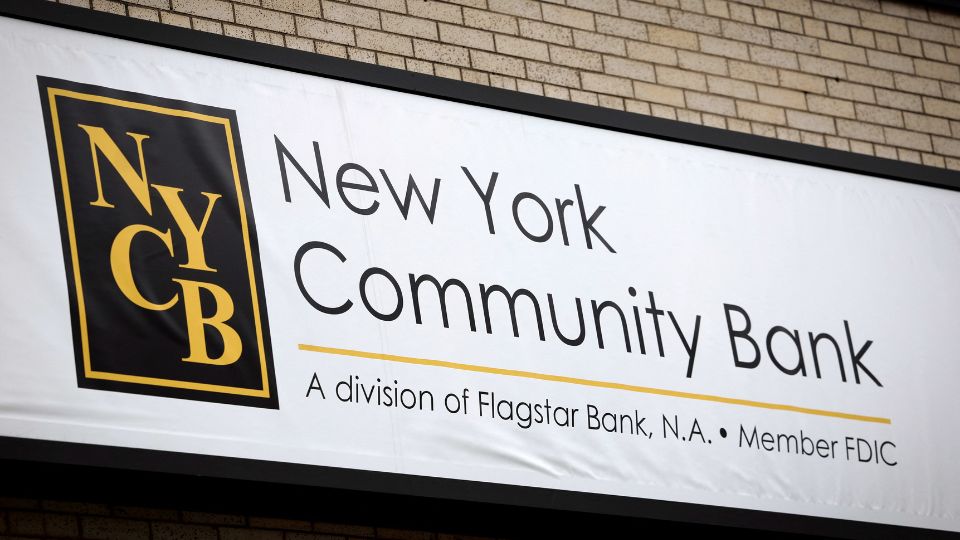Builders and developers are facing construction loan challenges amid tighter underwriting standards and reduced lending amounts.
Amidst evolving market conditions, tighter credit standards are affecting builders and developers causing a shortage of new real estate projects. Recent patterns hint at a shift in the lending landscape, where builders and developers face an array of financing challenges.
A revealing glimpse into this dynamic is provided by surveys and analyses from the National Association of Home Builders and the Federal Reserve, indicating higher interest rates on loans, reduced lending amounts, and changes in credit availability.
Builders and developers are navigating a complex environment shaped by Federal Reserve policies and fluctuating market conditions. The changing financial climate has significant repercussions for various building segments, altering the terms under which loans are granted.
These changes affect not only the cost of borrowing but also the sentiment within the industry, as builders express concern over the accessibility and terms of credit.
Key Takeaways
- Tighter credit standards are leading to increased loan rates and limited lending amounts for builders.
- Shifts in Federal Reserve policies and market conditions are influencing the credit landscape.
- Builders and developers are being forced to adapt to changes in loan terms and industry sentiment.
Impact of Federal Reserve Policies
In response to inflationary pressures, the Fed has adjusted monetary policy, affecting credit availability for builders and developers.

Fed Rate Hikes Main Cause of Recent Construction Loan Challenges
The Federal Reserve’s decision to increase interest rates has had dire consequences on builders and developers. These entities face higher borrowing costs due to the Fed rate hikes, which generally tighten credit conditions. Rate hikes are a lever that the Federal Reserve uses to manage the U.S. economy and combat inflation. In practice, higher interest rates fundamentally lead to a decline in loan originations as lenders impose more stringent borrowing terms.
Of course, one has to take into account that the Federal Reserve had reduced loan rates to historical lows prior to the recent hikes. After the Great Financial Recession of 2008, these rate reductions were viewed as a good cure for the many hardships that citizens were facing at that time.
However, in hindsight, it looks like the Federal Reserve kept the rates low for too long. Sometimes, as the saying goes, the cure is worse than the disease. In this particular case, inflation has gripped the economy and the only way to combat it is with higher rates.
Builders and developers have seen their business models implode due to these higher rates and the associated construction loan challenges imposed by lenders.
Survey Analysis and NAHB Data
The National Association of Home Builders (NAHB) conducts regular surveys to gauge credit conditions. These surveys reveal a complex picture post-pandemic, where credit availability has fluctuated. In a recent NAHB survey, findings underscored a tightening in credit conditions.
The Survey of Loan Officer Opinion on Bank Lending Practices (SLOOS) echoes these sentiments, as banks report stricter lending standards. These types of construction loan challenges have hampered project starts and affected the overall pace of development within the construction industry.
Construction Loan Challenges: Credit Availability and Market Conditions
There are not too many builders that have the enormous amount of cash reserves needed to buy land, obtain entitlements and permits, and build an entire real estate project. The vast majority of builders have to get a construction or development loan to pay for these costs. The loan is then repaid upon the sale of the project.
Therefore, the landscape of credit availability for builders and developers is a critical factor in determining project feasibility and market entry. Recent trends point to a tightening of credit conditions, which directly affects their ability to acquire financing.
Evaluating Lending Standards
Lending standards have become more stringent, with lenders increasing the scrutiny of borrowers’ creditworthiness. A key indicator of this trend is the Senior Loan Officer Opinion Survey, which highlights a shift towards more cautious lending practices. Lenders’ concerns primarily stem from an uncertain economic outlook, with anticipated deterioration in collateral values leading to changes in credit terms.
Builders’ Access to Credit
Builders and developers are encountering increased challenges due to the restrictive credit conditions. Specifically, there has been a rise in the interest rates on loans, as reported by 69% of the respondents in an NAHB Eye on Housing survey. As a result, the loan-to-value (LTV) and loan-to-cost (LTC) ratios have been significantly impacted, wherein lenders are reducing the amount they are willing to lend, thereby lowering the LTV or LTC thresholds they find acceptable.
Effects on Building Segments
Tightened credit conditions have led to differentiated impacts across various building segments, particularly affecting both builders and developers in the areas of single-family construction and the balance between speculative and pre-sold projects.
Related: CRE Lender NYCB Massive $2.7B Loss Triggers CEO Exit
Single-Family Construction Loan Challenges
Single-family construction has faced significant hurdles with builders reporting increased loan rates and reduced lending amounts. According to the National Association of Home Builders (NAHB), a substantial 80% of builders encountered higher costs on loans, while over half observed a decrease in the lending capital available to them. This has resulted in a strain on the development of new single-family homes, as developers must navigate both financial restrictions and market volatility.
Impact on Speculative vs. Pre-Sold Projects
The effects of tight credit vary between speculative and pre-sold single-family construction projects. Speculative single-family construction suffers as developers hesitate to undertake the risk of building homes without guaranteed buyers. With credit harder to come by, the propensity to engage in speculative building diminishes, leading to a slow down in construction starts.
Conversely, pre-sold single-family construction has a slight buffer from tight credit, given that these projects typically rest on secured sales, yet they are not immune to the hardships of increased loan rates, as evident by the average contract rate rising significantly. Builders in this segment may find some safeguard in existing sales but still face constraints in scaling operations or initiating new developments.
Builder Sentiment Emphasizes Major Construction Loan Challenges
In assessing the impact of these construction loan challenges on builders and developers, major factors such as loan-to-value ratios and interest rates play pivotal roles in shaping builder sentiment and their market outlook.
Interpreting Loan-to-Value and Interest Rates
Loan-to-value (LTV) ratios and interest rates are critical indicators of credit accessibility. LTV, representing the loan amount as a percentage of the property value, has seen a notable decline, indicating lenders are financing a smaller proportion of project costs. In recent times, the average LTV on loans has decreased from 70.9% to a more conservative 64.4%, reflecting heightened risk aversion from lenders.
Interest rates, particularly the contract interest rate and average effective rate, play a substantial role in determining the affordability and feasibility of new construction projects. Builders have faced increases in the contract interest rate on loans, with rates for single-family construction rising incrementally. Such changes in rates can significantly alter the effective rate of loans over the assumed life of the loan, affecting overall project costs and potentially influencing the initial points needed to secure financing.
Related: 2024 Foreclosure Trends Increase, But Refinances Gain
Builder Confidence and Credit Outlook
Builder confidence, intricately tied to credit conditions, has been affected by these tighter standards. Surveys of home builders reveal a majority experiencing higher rates on available loans, a reduction in the dollar amounts available for lending, and heightened scrutiny in underwriting.
These factors collectively contribute to a cautious or even pessimistic credit outlook in the construction sector. While some indices suggest a resilient market, the sentiment is undeniably tempered by the current credit environment. Builders’ strategies and project planning are being recalibrated to align with the stricter lending criteria and the necessitated adjustments in their financial models.
Strategies for Navigating Tough Markets
In an economic landscape where tighter credit standards are prevalent, builders and developers must recalibrate their approach to ensure financial viability. Pivoting strategies might involve re-evaluating land acquisition priorities or optimizing financing structures.
Adapting to Tighter Credit Environments
Builders and developers are finding that a changed credit atmosphere requires a thoughtful reassessment of their financial strategies. In adapting to an environment where development loans may come with an effective interest rate that reflects the cost of credit, maintaining liquidity is paramount. For companies focused on land development, this could mean prioritizing projects that promise quicker returns on residential land acquisition, to strengthen their financial standing.
When faced with stringent lending conditions, midsized builders, in particular, find that diversifying their portfolio to include projects that meet the net easing indices may help them secure more favorable loan terms. They also increase their appeal to lenders by thoroughly demonstrating the anticipated profitability and risk mitigation plans for each development proposal.
Related: Boomer Housing’s Surging Wave: 9 Million Homes Incoming
Finding Opportunities Amidst Challenges – Tertiary Markets and Niche Markets
Despite the downward pressure on credit availability, opportunities still exist for astute developers and builders. Savvy professionals seek out niche markets or underdeveloped areas where competition is less intense, thereby potentially reducing land acquisition costs. They also focus on establishing strong relationships with a variety of financing sources, from traditional banks to alternative lenders, hedging against market fluctuations and net easing indices.
Moreover, some developers are exploring creative financing options, such as partnerships or joint ventures, which can provide more flexible funding solutions. By diversifying their approach to financing and acquisition, they not only mitigate risks but can also take advantage of new opportunities amidst a landscape of tightened credit.





